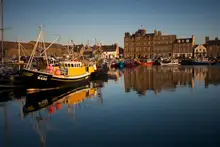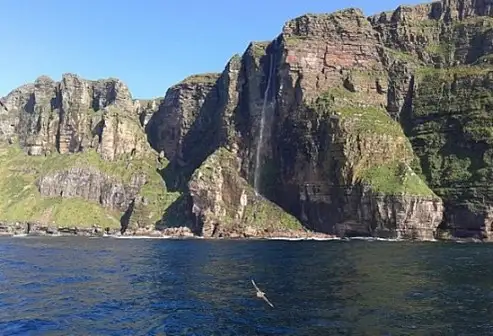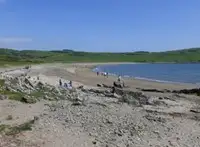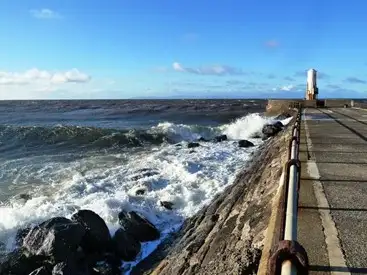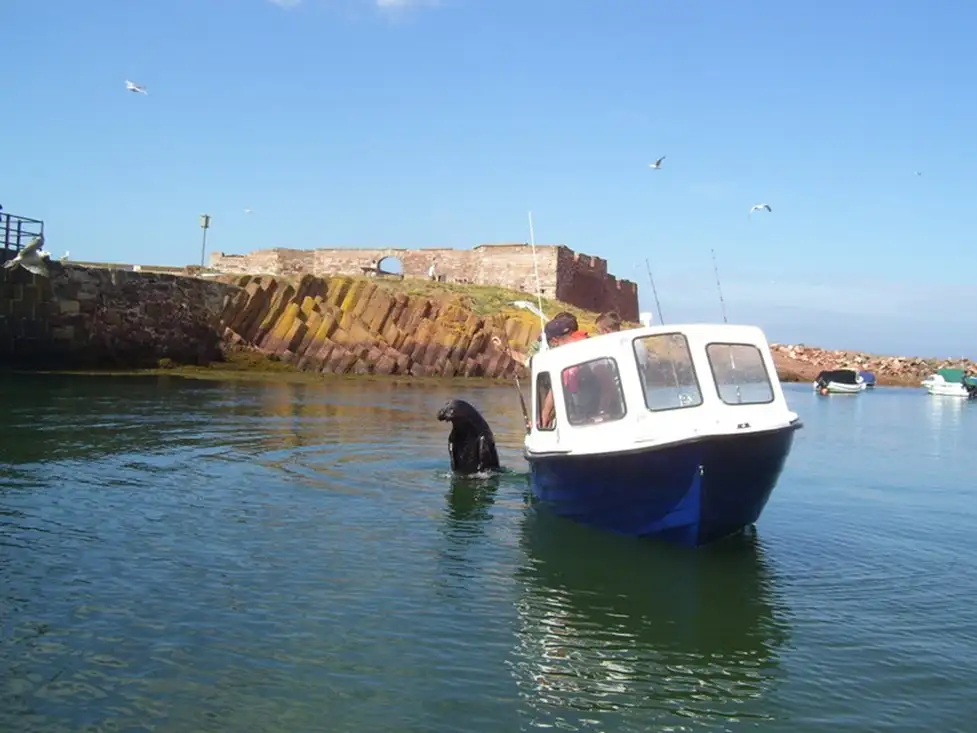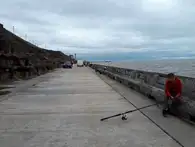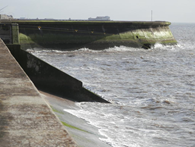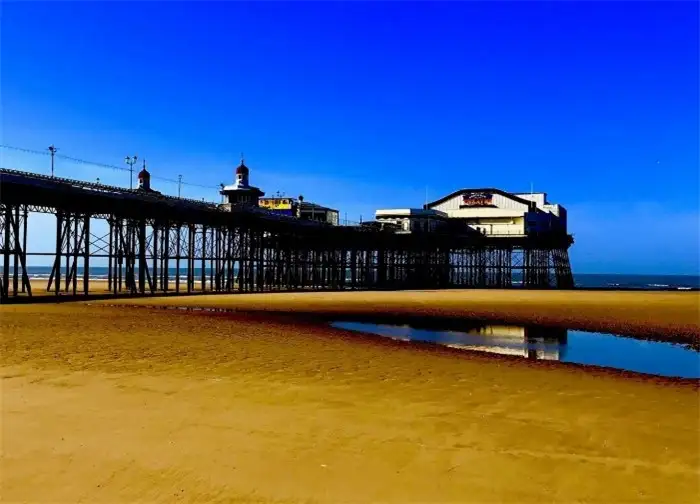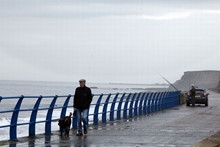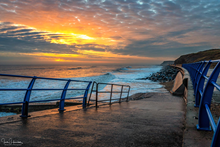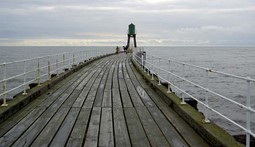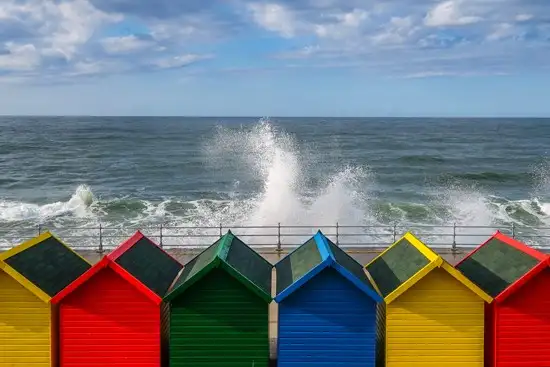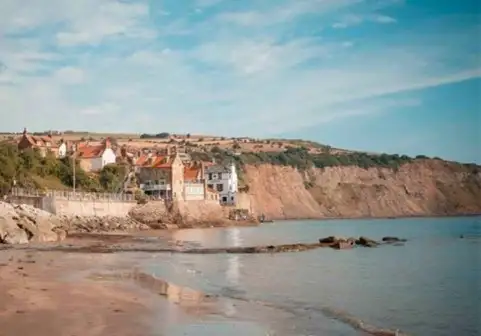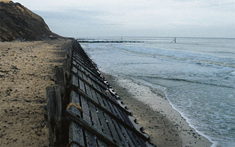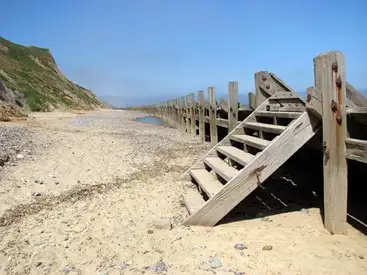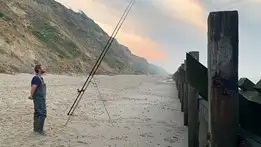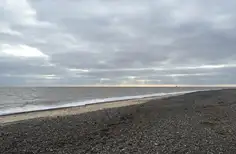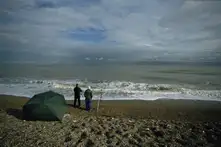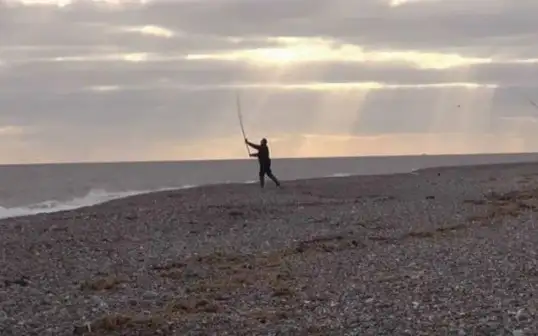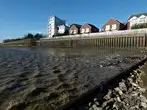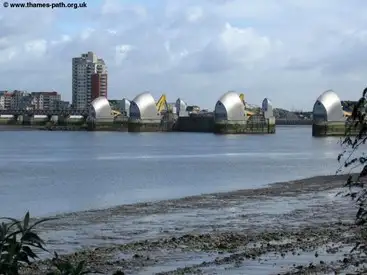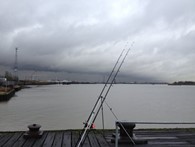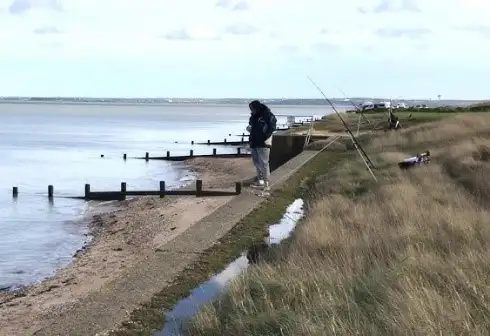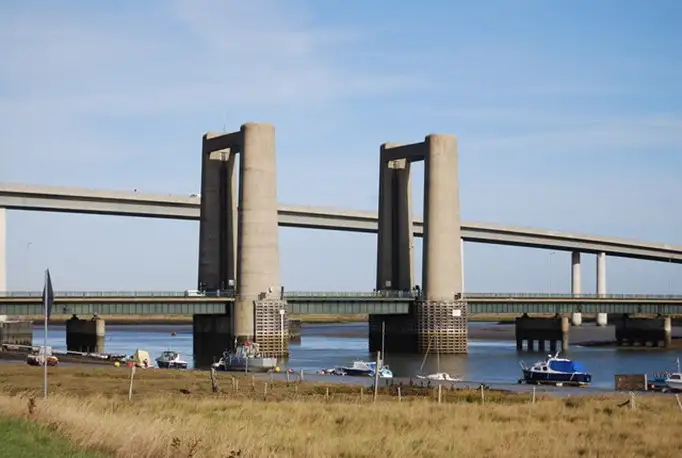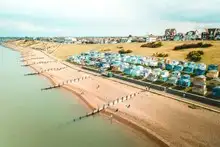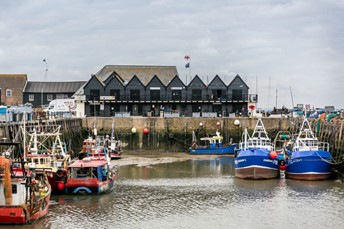This is a demo store. No orders will be fulfilled.
Top Sea Angling Marks - Where Can You Go Sea Fishing in the UK?

In the United Kingdom, we are blessed with some of the finest coastlines in Europe for sea angling. With Britain being such a slender island, getting from the central mainland to the coast is never too difficult. For those family seaside holidays coming up, there is bound to some beach trips so why pick somewhere you can squeeze some fishing in too?
Perfect for beginner shore anglers, the UK has plenty of fishing on offer from the beaches as well as charter fishing opportunities offering more adventurous sea anglers the chance for offshore fishing. This guide will provide a host of locations to add to your sea fishing trips bucket list, as well as including all the relevant information around that beach and sea mark; from best baits to parking!
| TOP TIP: When planning any sea fishing trip, remember to check the weather and tide forecast so you do not have to rush to pack up when the weather turns for the worst! |
To make things a little bit easier and to ensure we cover the majority of the UK, this guide will sort the locations for sea fishing into the different areas of the UK.
|
PART 1 |
|
|
|
The Republic of Ireland is not part of the UK and therefore is not featured in this guide, however, if you are interested in coastal locations to fish in the Republic of Ireland as well as other venues for freshwater fishing, visit our dedicated guide.
Sea Fishing Spots Near Me?
You can find all the sea fishing locations mentioned in this guide on the map below. You never know, you may have been local to a hidden gem!
Wanting to find the nearest sea fishing tackle shop to your venue? We have added the local Angling Directs to the venues too. If you want all our store location, visit our store finder.
Scotland
Scotland shares its coast with both the Atlantic Ocean and the North Sea making its coasts and islands great places to cast your line. You can view even more Scotland fishing locations, sea and freshwater here.
The Orkney Islands, Kirkwall
Towards the eastern coast of Scotland, the islands surrounding Orkney offer a few sea fishing hot spots such as Kirkwall Harbour Bay and Tingwall Port (an ideal location to land smaller sea species). The Orkney Islands has plenty of sandy beaches such as Newark Bay where anglers have a chance of decent bass. There is also Orkney Islands Sea Angling Association that offer 4, 6 or 8 hours charter boat sessions.
| £: | Free to fish from the shores of the island but will be costs for parking at the pay and display car parks and arranging ferry transport to the islands. Costs vary when arranging the charter fishing with the local angling charters. |
| Main Species: | Great for flounder, cod, dab, whiting, mackerel, bass, and dogfish. |
| Season: | For summer months, anglers can find plenty of camping parks around Orkney and large amounts of mackerel by Tingwall port which can then be used as baitfish along the harbours of on charters. |
| Recommended Baits: | A general strip of Mackerel white belly along with the attractive scent of the mackerels gill can work wonders for bigger fish. Strips of colley, cod, or ling also work well here. |
| Recommended Tackle: | Add shiny metal spoons by your hook for flash and vibration along with a size 5/0 hook and mainline of 60lb plus. |
| Directions: | Getting to Orkney Island spots may require some effort. You can drive your car full of fishing tackle to these hotspots via the ferry ports at Aberdeen, Scrabster, Gills Bay, or John O'Groats. |
| Parking: | Car parking by the bays and harbours and around Tingwall are mostly Pay & Displays offering a stay from 9 am – 5 pm. |
Kirkcudbright Harbour, Galloway
The Dumfries and Galloway coastline in the south-west of Scotland is considered by many sea anglers to be one of the finest fishing spots in the UK. This sea angling venue is great for fans of lure fishing methods, with the popular marks being Brighouse Bay (15 minute drive away) as it offers various flatfish species as well as the chance of a bass. Fishing in the harbour will land you flounder and dogfish. is a popular area for sea angling near this location. You can check the tides for Brighouse Bay for ideal fishing times on the Tides Chart website.
| £: | Other than parking costs fishing at this mark is free. |
| Main Species: | Various flatfish species, bass, pollock, coalfish and mackerel. Flounder, smoothhound and dogfish are close to the harbour structure. |
| Season: | The best fishing is in the summer months. |
| Recommended Baits: | Fish mackerel strips for doggies or smoothhound. Sandeels and squid are good for night fishing are smaller species. |
| Recommended Tackle: | Use a set of mackerel feathers/ lures to catch your baitfish. Plain leads are ideal for most marks. |
| Directions: | For Kirkcudbright Harbour, turn off the A711 to Castledykes Road which you follow down, past the public swimming pool to reach the mark. For Brighouse Bay, drive along the B272, through the town until you reach the turn for Brighouse Bay Road which you follow past the Holiday Cottages to the car park. |
| Parking: | Towards the Western end of Brighouse Bay Beach, there is a car park with toilet facilities. For the Harbour, park for free at Harbour Square car park and walk for 5 minutes to the marina. |
Ayr Harbour, South Ayrshire
Ayr Harbour and Pier offers plenty of fishing opportunities for sea anglers after a range of species. The south side of the harbour does see most of the angling due to being closer to pier access points. There is also charter boat fish available with the Ayr Sea Angling Club.
| £: |
Pay for parking although there is some free parking areas near the south side of the harbour. |
| Main Species: | Mackerel, mullet, pollock and coalfish. The pier is also a good mark to catch flounder, plaice, dogfish and conger eels. |
| Season: | Calmer tides will raise your chances of mullet. Summer (June onwards) is often best for this location. Night tides best for eels. |
| Recommended Baits: | Best baits tend to be bread for mullet with other species biting for strips of mackerel. Other baits to try are ragworms, lugworms, peeler crabs or sandeels. |
| Recommended Tackle: | Use light beach caster rods and spinning rods due fishing over the sand or mud. 6lb-15lb mainline of your reel of choice is ideal with successful rigs being the be two or three-hook paternosters. |
| Directions: | Heading from Glasgow, you can reach south Ayr by the A77. |
| Parking: | For fishing near the pier, there is a carpark within the ground of Culzean Castle. Toilet facilities can also be found at the Castle car park. |
North West Coast of England
Most of the West coast of England shares its coastline with the Irish Sea.
Blackpool Piers, Blackpool
There are three main piers in Blackpool, all of which offer good fishing for a wide range of species. Getting access to these piers, especially the North Pier can be challenging due to the restricted access and the Central and South requiring memberships of local angling clubs. Many visiting anglers head to the North Wall as it offers a high tide and therefore plenty of fish.
| £: | Memberships to local angling clubs are required in order to access the piers. Contact Bispham Angling for more information. |
| Main Species: | Whiting, dab, rockling, flounder, dogfish, bass and cod. Also a chance of thornback rays and smoothhounds. |
| Recommended Baits: | Black lugworm is a favourite at the North Wall but anglers are also successful in using peeler crab, mackerel strip, squid and razorfish. For predators, especially smoothhound, try squid wrapped in mackerel. |
| Recommended Tackle: | Due to fishing over a relatively snag-less sandy bottom, you only need gripper leads or weights when the wind is high. |
| Directions: | Head away from the tourist areas, along Gynn Wall and towards the North pier for great fishing marks. |
| Parking: | There are plenty of places to park in the side streets along Blackpool’s promenade as well as a few pay and display areas. |
Rossall Point, Fleetwood
On the Fylde coast, this mark offers a mixed ground beach that is covered with gullies, rocky outcrops and groynes, producing some great fishing.
| £: | No permits or memberships required although there are local angling clubs that can help with sea boat fishing offshore. |
| Main Species: | Cod and whiting are here in the winter, and summer sees thornback ray, bass, silver eels and various flatfish. |
| Season: | Good fishing all year round with June-July bringing lots of flounder, eel and bass catches. |
| Recommended Baits: |
Try baiting with worms, crabs and razorfish. Fresh black worm is noted as a top bait for cod and codling. |
| Recommended Tackle: |
Use 3/0 pulley pennel rig. |
| Directions: | Located in the northwest side of Fleetwood, this sea fishing mark can be accessed by the A587 or A585. |
| Parking: | Plenty of free parking can be found at Princes Way carpark, next to the fishing mark as well as nearer to the shore at the car park near the Sea Cadets log cabin. |
LOCAL ANGLING DIRECT TACKLE SHOP – AD PRESTON
North East of England
The north, eastern coast of England is met by the North Sea. If you are travelling from the southern part of England you are likely to pass AD Leeds.
Berwick-upon-Tweed, Northumberland
A peninsula between the sea and the River Tweed, this location is great for shore fishing, especially Spittal and Goswick Beaches. Fishing in the summer around the Needle’s Eye area can be promising for bass. During very calm conditions in the summer, fish by the pier and harbour for mullet.
| £: | A free place to fish, although further up the Tweed will require a rod license. |
| Main Species: | Flatfish, codling, mullet, pollock and bass. |
| Season: | Bass, wrasse and pollock can be caught in summer from some of the rock marks and mullet by the pier in calm conditions. Winter for cod. |
| Recommended Baits: | 3/4 lugworms on your hook, some fleshy mussels, or a generous section of razorfish are ideal baits. Can also try combining lugworm with red ragworm, peeler crab and shellfish or cockles. |
| Recommended Tackle: | Spinners, plugs and spoon lures are worth a try. Big hooks for big cod are suggested. |
| Parking: | If you fish near the lighthouse, there is a small free car park just before the pier and another carpark which has access to the beach (just follow the road around). Also, plenty of free parking found around Spittal Beach. |
Hendon Promenade, Sunderland
The promenade stretching along Hendon is a popular fishing mark that offers easy access thanks to parking along the promenade. The sloping beach is interspersed by wooden groynes and rocky sea defences which can be fished over. Anglers should note that the ground around the prom can be quite snaggy, but it depends on the tide and part you are casting from. Anglers should be aware that fishing near heavy seas waves can be dangerous as they crash over the blue fences. Low water fishing on the beach in front of the prom has given the best results. Check tides here.
| £: | Free to park and to fish. |
| Main Species: | Cod, whiting, flounder and dab are caught from this mark, plus bass is also a possibility here. |
| Season: | Best fishing results usually come just after a period of rough weather where storm holes are created. Night fishing in spring or day time fishing in the Winter months (September- January) can be very productive. |
| Recommended Baits: | Usual sea fishing baits work here with ragworm, lugworm, squid and peeler crab all worth trying. Yellowtails and snake whites are by far the best. Blow lug, ragworm, mackerel, peeler crabs and mussel will all catch fish. |
| Recommended Tackle: | Pulley rigs are often used with size 2/0 hooks as they are great for rough conditions. Beachcaster rods are ideal with a 15lb line and leader is suggested. |
| Directions: | Access is via the A1018, turning onto Promenade road and following it down to where you fish to park. |
| Parking: | You can park your car right next to where you are fishing, anywhere along the promenade but be careful where you park, sometimes stones can get thrown up by the waves. |
The Midlands of England
The midlands locations are picked both from the East coast with your nearest AD stores being Leeds and Hulls.
Whitby Beach, North Yorkshire
Throughout the summer species such as and the occasional Bass can be caught from the Whitby shorelines whereas the winter brings in plenty of Cod to catch. If you stick to land, eels can be caught closer to the harbour and pier. Whitby East pier is usually quiet with the west pier more popular, due to having two levels for casting off.
| £: | Shore and pier fishing is free of charge but charter boats can be books with local business’; Whitby Fishing Boat Trips & Whitby Fishing Trips. |
| Main Species: | Mackerel, coalfish, pollock, flounder, cod in the winter. Eels close to the pier. |
| Recommended Baits: | Peeler Crabs are great bait for tempting the Cod, in the summer opt for Mussel or Lugworm. |
| Directions: | The Pier is only accessible on foot. |
| Parking: | There is plenty of pay and display parking spaces in the surrounding areas of Whitby beach. You cannot drive right down to the pier but there is ample parking just a 5-minute walk away. |
| TOP TIP: For the best fishing you need heavily coloured water and a very dull overcast day. |
Robin Hood’s Bay, Yorkshire
As one of the UK’s most scenic sea fishing marks that is lined with flat rocks, and skirted by red cliffs, this large bay also offers great angling opportunity. Make sure to fish at high tide as the tide comes right up to the base of the sea wall, allowing good fishing to take place several hours. At low tide, great marks to consider are Stoupe Beck Sands, Boggle Hole (1 mile south) and Long Hole, all along the bay.
| £: | There is a cost for car parking for most of the stretch of the bay. |
| Main Species: | Cod are a possibility all year round, but are obviously bigger and caught more regularly in the winter, along with whiting. Flounder and dab and show and there are some bass in the summer. |
| Recommended Baits: | Sandeel is the popular bait here. |
| Recommended Tackle: | As with any elevated fishing mark a drop net is needed to safely bring in any caught fish. |
| Directions: | For shore fishing at Stoupe Beck Sands, there is vehicle access on Old Scarborough Road., Anglers should note that the beach is 130 steps below. Boggle Hole can be reached either by taking the narrow road through Fyling Park or from south of Fylingthorpe. |
| Parking: | Car Parking close to the Stoupe Beck Sands is at the nearby farm which does has a cost for daily use. There is also a car park on Bridge Holm Lane near, Boggle Hole which offers 38 spaces a short walk to the shore. |
East of England
The East of England coastline is met by the southern waters of the North Sea, with coastal counties including Norfolk, Suffolk and Essex. For more Norfolk fishing venues, view our dedicated guide.
Trimingham Beach, Mundesley
Despite being relatively difficult to access, Trimingham beach is well worth the trip for the view alone. With high cliffs that backs the beach and a base protected by a wooden barrier and groynes, this venue is pretty impressive, although checking for the low tide is advisable.
| £: | Free to fish at this venue. |
| Main Species: | Cod, Whiting, Dab, flounder, Dover sole, silver eels and school bass. Smoothhound and ray species are a chance with distance casting. |
| Season: | Winter-Spring and late summer. |
| Recommended Baits: | Use worm, sandeel or crab baits. |
| Recommended Tackle: | The tide is not too rough so standard surf rods are ideal with fixed spool reels. Pair your tackle with big hooks, 3/0 or larger. Waders are an essential item when the sea is not calm. |
| Directions: | Access can be found via the B1159 and then turning off onto the rough dirt track adjacent to the Ingleside Hotel which you follow down to Tarmac road which takes you to the beach. |
| Parking: | Follow Vale road down to a free parking area at the foot of the cliffs. |
LOCAL ANGLING DIRECT TACKLE SHOPS – AD WROXHAM & AD NORWICH.
Kessingland Beach, Suffolk
Kessingland Beach gives sea anglers the chance to catch a variety of species from the shoreline and is less commercial than neighbouring Lowestoft or Southwold shoreline making it perfect for peaceful sea fishing. It is even a favourite sea mark of the Angling Direct Youtube team!
| £: | Free to fish at this venue but maybe a charge for long-stay car parking. |
| Main Species: | Adult cod, whiting, flounder and dab in the winter. Summer is good for codling, bass, sole, dogfish and smoothhound. Can catch ray species here too. |
| Recommended Baits: | Lugworm, ragworm or peeler crab. Try strips of mackerel, herring or sandeel baits at long range for rays. |
| Recommended Tackle: | Summer sole requires your worm baits on small size 4-8 hooks on multi-hook rigs. Other larger species such as smoothhound or bass require pennell rigs casted behind breakers. |
| Directions: | Found just off the A12, south of Lowestoft. Facilities can be found along the seafront including cafes and public toilets. |
| Parking: | Nearby free car parking can be found on Church Road right next to the beach |
NEAREST ANGLING DIRECT TACKLE SHOP – AD BECCLES
Thames Estuary
The Thames Estuary offers amazing fishing for many edible and great tasting species of fish. Catches vary month by month as the seasons change so there is always great fishing to be had!
Woolwich, London
This sea fishing spot offers angling opportunities just an hours drive from central London. Despite being 50 miles from the north sea, this spot along the tidal flood barrier in Woolwich is home to migrating sea fish species that swims up the Thames. It is where the Thames water turns a bit salty! It's best fished for 4 hours on either side of high water.
| £: | Free to fish. You do not need a rod licence downstream from the barrier. |
| Main Species: | Mullet, Flounder, Eels and Mackerel. |
| Season: | You can fish from the shore of the River Thames in North Woolwich during summer at low tide at catch plenty of sea species. |
| Recommended Baits: | Bread and earthworm baits will work. Ragworm and lugworm will also catch fish bug flounder here love pawns, squid and mackerel strips! |
| Recommended Tackle: | The suggested hook size is 1-2. Many anglers prefer swapping the beach casters for carp rods at this mark. |
| Directions: | Woolwich Road and is approximately a one-mile walk from the Thames Barrier Site. Woolwich Dockyard station is situated near Church Street and is within walking distance. The jetty looking down the Thames river on the left is all accessible by a footpath, a short walk from car parking. |
| Parking: | Some free car parks can be found on roads surrounding Woolwich High Street. |
LOCAL ANGLING DIRECT TACKLE SHOP – AD CRAYFORD
Kingsferry Bridge, Isle of Sheppey
Located in the south-east, within Kent, on the Isle of Sheppey, the Kingsferry Bridge not only offers pathways from the mainland to the island but also offers great fishing locations. It is surrounded by the end of the Thames estuary as well as merging with the south of the North Sea. The stretch of Swale river that runs under the bridge has an open sea on either side of it, offering some bizarre tides, especially when the sea running in both directions and creating natural food traps, creating a constant presence of sea species.
| £: | Free to fish. |
| Main Species: | Flounder, codling, whiting, pouting and eel can be found nearer to structures like the lighthouse. This mark is populated by the Bass in Winter to shield themselves from the worst of the North Sea weather and to breed. |
| Recommended Baits: | Bait with lug, ragworm or crab for most species. Luckily the riverbanks are alive with shellfish, crab and other mini-species that you can use throughout a session. You can also try fishing mackerel or herring fillet or sandeel baits at range, especially for bass. |
| Recommended Tackle: | In summer scale down your hook size to a 6-8. Use a flat lead when targeting flounder and eel as it will move around in the tide and drag your baits over any lurking fish. |
| Directions: | To get there could not be easier; simply join the A249 and follow it until you reach the bridge where the various hotspots are located. |
| Parking: | The car park by the bridge is private, which means that you will have to leave the car in one of the ample lay-bys (free of charge). |
LOCAL ANGLING DIRECT TACKLE SHOP – AD SITTINGBOURNE
South-East of England
The south-eastern coast of England offers catches from the North Sea and the Strait of Dover /Dover Strait / Dover Narrows, which is a merging of the narrowest part of the English Channel and the North Sea. Coastal counties include Kent, West Sussex, East Sussex and Hampshire.
Whitstable Beach and Harbour, Kent
The town is very much known for its Oysters, Whitstable offers anglers plenty of angling opportunities for sea fishing. Marks around the harbour can be productive with similar species present also at the pebble beach, casting between the wooden groynes. Open sandy beaches heading towards Seasalter can produce when there is some sea running, however, these beaches can be quite shallow, meaning long casting can be needed to reach the fish. To avoid tourists, it's best to come night fishing and at this time fish also come into shallower water so the chances of catching improve.
| £: | Parking can be expensive if free parking cannot be found. |
| Main Species: | Silver eels, flounder, dab, lesser-spotted dogfish and school bass. |
| Season: | Good fishing in the spring and summer onshore. Checking the fishing forecast is available here. |
| Recommended Baits: | Lugworm can be dug locally and seems to be the top bait. Peeler crabs can also be found along the shore and are a commonly used bait. |
| Directions: | After turning off the A229 towards Borstal Hill, you follow Cromwell Road until you reach the Harbour/ Whitstable high street. |
| Parking: | There is sometimes free parking on the residential streets behind the main High Street but most car parks surrounding the beach are pay and display. |
CLOSEST ANGLING DIRECT TACKLE SHOP – AD SITTINGBOURNE
Dungeness Beach, Kent
Considered to be one of the top sea fishing venues in the country. Dungeness Beach is located near Lydd and sports a sloping shingle structure that provides access to snag-free deep water. The whole coastline of Dungeness produces great fish for sea angling but a hot spot can be found next to the lighthouses.
| £: | Rays, Spurdogs, flatfish and cods, as well as plenty of other offshore species, can be caught Charter fishing at this mark. More information can be found on the local Charter’s site. |
| Main Species: | Excellent fishing for most species. Summer sees silver eels, lesser-spotted dogfish, sole and bass. Winter makes for a cod hot spot. |
| Season: | The summer and winter months are most productive. |
| Recommended Baits: | Freshly dug black lugworm is the top bait or a whole squid. |
| Recommended Tackle: | Baits on pennell rigs are successful. The charter boat can supply suitable tackle as a charge. |
| Directions: | Follow the A2070 and then the A259 from Ashford. There are local café, restaurant and a local public house within a few minutes walk from the beach. |
| Parking: | Ample free car parking can be found adjacent to Dungeness Lighthouse. |
